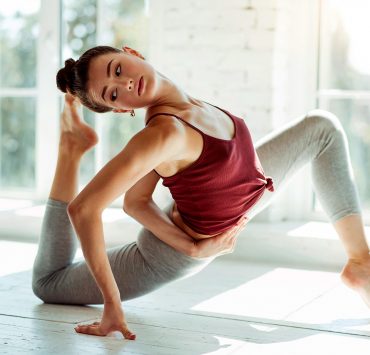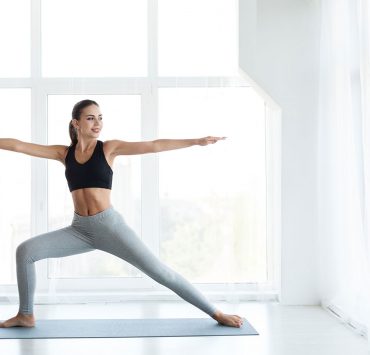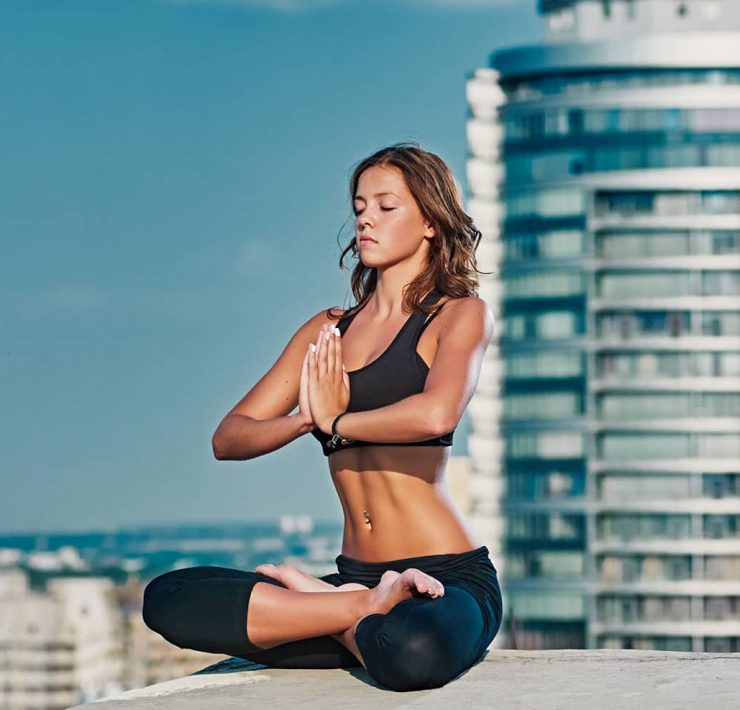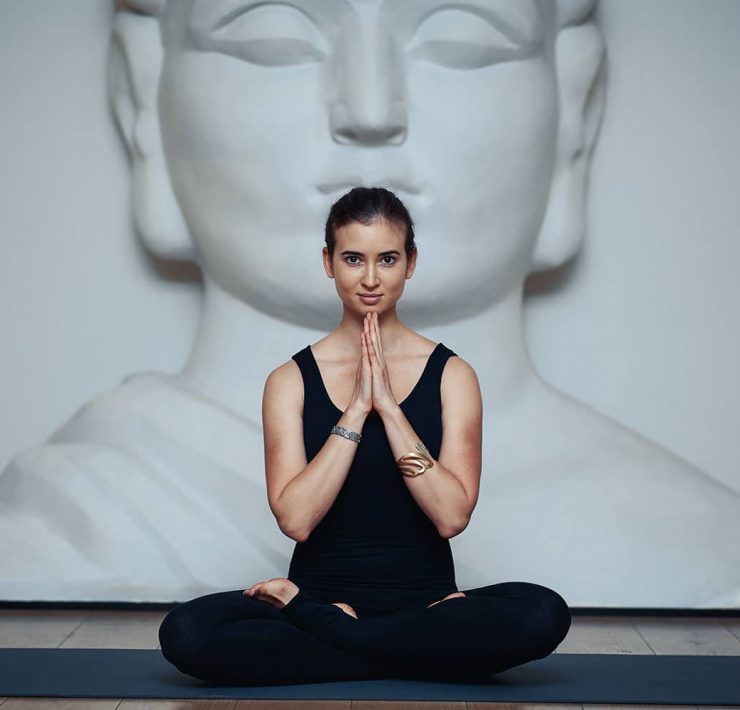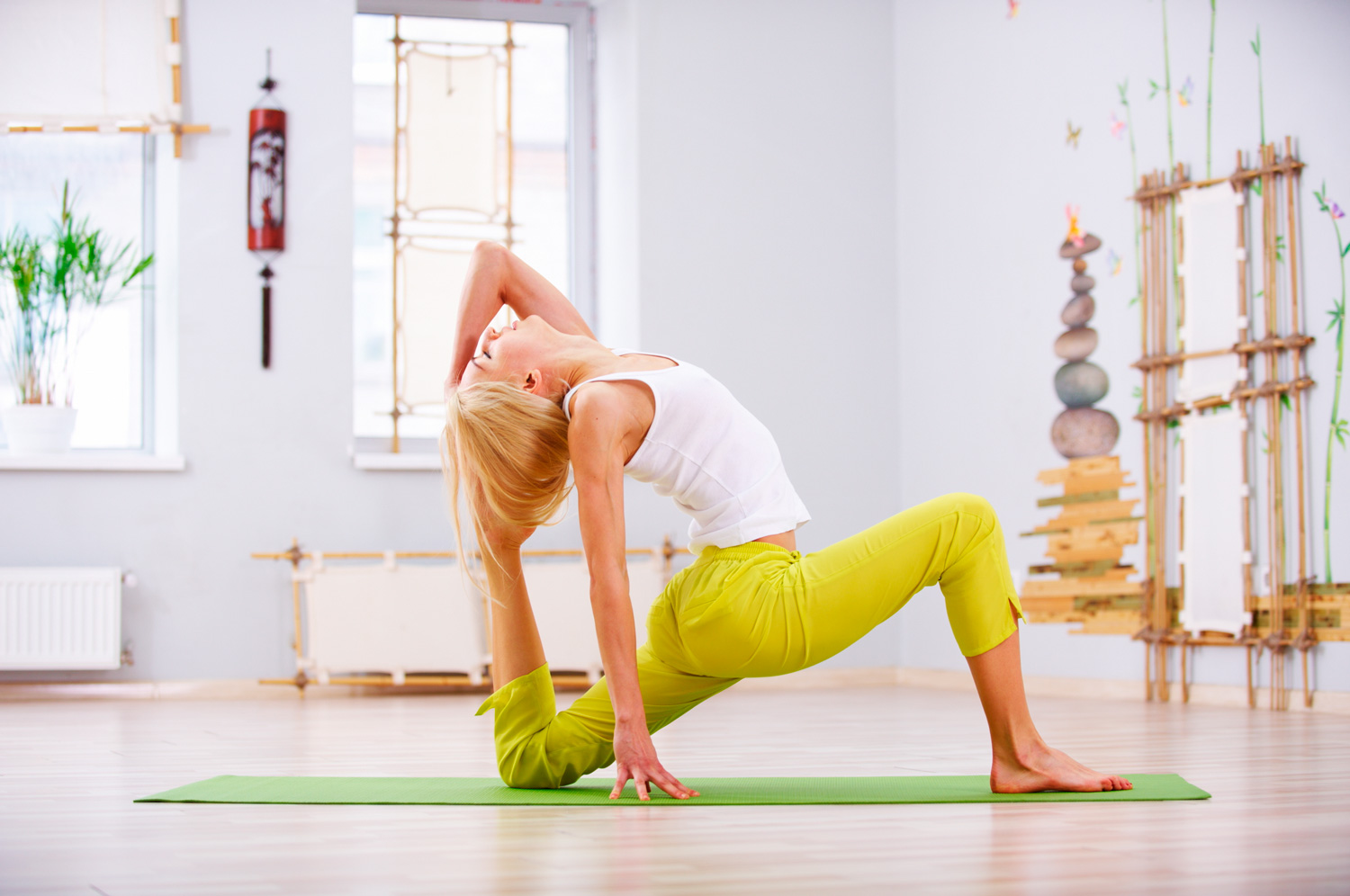
Yoga, meditation, and spirituality are at the top of the…
High blood pressure is an incredibly common condition that plagues millions of people. The treatments for the condition, besides medicine in the necessary cases, include lifestyle changes—a healthier diet and consistent physical activity being at the top of the list. It is probably no surprise that yoga can be an excellent tool when it comes to managing high blood pressure. The practice, which can help calm the mind and body, has been found to be a beneficial aid when it comes to controlling high blood pressure. Certain targeted poses can be particularly great for restoring and relaxing.
What is High Blood Pressure?

High blood pressure, or hypertension, is a condition where the force of the blood moving through your blood vessels is too high. The pressure is related to the amount of blood your heart pumps, as well as the resistance to the blood flow in your arteries. Typically, there aren’t any signs or symptoms of high pressure, and it is usually caught at routine doctor visits. Some people, however, may have headaches, a difficult time breathing, or nose bleeds.
There are two types of high blood pressure. The first, primary hypertension, doesn’t come from an identifiable cause. It typically grows gradually over the course of many years. The second, secondary hypertension, is caused by an underlying condition, and typically occurs suddenly. Conditions and causes that can lead to secondary hypertension include kidney issues, stress, obstructive sleep apnea, thyroid problems, certain birth defects, and certain medications.
High blood pressure can lead to multiple health problems, like heart disease or stroke, particularly if it is not managed properly. However, since it is easy to detect and routinely checked at annual check-ups, patients can work with their doctor on a plan to control it.
Typically, a doctor will recommend certain lifestyle changes in order to control high blood pressure. These changes include eating a healthy diet with limited salt, consistent physical activity, limiting alcohol, and maintaining a healthy weight. Certain medications may also be prescribed in addition to these lifestyle changes.
Yoga Poses for High Blood Pressure
In addition to the changes mentioned above, yoga has been found to be a great tool to implement to control high blood pressure. Researchers have found that yoga can help reduce the blood pressure of people with hypertension and prehypertension. These calming yoga postures are especially beneficial for those looking to control high blood pressure.
Baddha Konasana — Bound Angle Pose

Bound Angle Pose, or Baddha Konasana, is a relaxing and restorative pose that helps you stretch into the inner thighs. The pose is also excellent for opening up your hips and stretching your groin muscles.
Instructions:
Start seated, with your legs out in front of you. On an exhale, bend your knees and bring your feet towards you. Place the soles of your feet together in front of your pelvis, letting the outside edges rest on the mat.
Allow your knees to drop to either side at a comfortable level. Do not force them down so that they are touching the ground–let them hang in space if that is what is accessible. Grab hold of your feet, and bring them as close to your pelvis as comfortable, while still keeping them on the ground.
Breathe through this posture, ensuring that your spine remains elongated and shoulders relaxed. Hold for about a minute, and then release back to a comfortable seated position.
Paschimottanasana — Seated Forward Fold Pose

Seated Forward Fold, or Paschimottanasana, is a simple, calming posture that provides a stretch to the back of the legs.
Instructions:
Begin seated (on a block or blanket if you’d like) with your legs out straight in front of you. Be sure that your spine is elongated and gaze forward. On an inhale, raise your arms above your head. On an exhale, bend at the hips and begin to reach your arms and torso forward.
You can place your hands wherever is accessible, and bend your knees if you’d like. You can place a bolster on your thighs and rest your torso on it for an even more restorative option. As you inhale, elongate through your spine, and as you exhale, gently drive your chest closer to your toes. Hold for 30 seconds to a minute, and then release back up.
Virasana — Hero Pose

Hero Pose, or Virasana, provides a comfortable stretch to the quadriceps, as well as the knees and ankles. This seated posture allows you to slow down and connect with your breath as your legs stretch.
Instructions:
Start on your knees, with your glutes off your heels and the tops of your toes touching the ground. Keep your inner knees together, but begin to guide your feet away from each other, slightly wider than hips-distance apart.
On an exhale, slowly sit back, bringing your glutes between your heels. If it is uncomfortable to bring your glutes all the way down to the ground, you can place a block or folded blanket beneath you for support.
Rest your hands comfortably on your thighs, and breathe through the posture. Keep your shoulders away from your ears and spine elongated. You may choose to soften your gaze as your stay here for 30 seconds to a minute. To release, bring your palms to the ground and gently guide yourself back up.
Viparita Karani — Legs Up the Wall Pose

Legs Up the Wall Pose, or Viparita Karani, is a mild inversion that is incredibly calming and restorative. It is also great for alleviating any back aches.
Instructions:
From a seated position, bring your glutes up toward the wall. Lie onto your back, and swing your legs up against the wall, above your hips. Make any adjustments, such as bringing your hips closer to the wall. You may need to slightly bend your knees to make it more accessible.
Place your arms in a comfortable position, such as out in a “T” shape or stretched above your head. Remain in this restorative pose for about 30 seconds to a minute, while keeping your eyes soft and your breath deep and steady. Slowly and carefully release to one side into fetal pose to get out of the pose.
Setu Bandha Sarvangasana — Supported Bridge Pose

A supported version of Bridge Pose, or Setu Bandha Sarvangasana, turns the otherwise active pose into a much more restorative posture, helping to calm the mind while lengthening through the spine.
Instructions:
Begin on your back with your knees bent and soles of your feet on the ground. Ensure a block is easily accessible. Begin to lift the hips up to create a diagonal line from the head to the knees, while keeping your glutes soft but core engaged. Keep your neck relaxed and roll your shoulders away from your ears.
Grab for your block, and align it horizontally along your tailbone. It can be on either the second highest or highest level, depending on how deep you want the back bend. You can keep your knees bent, or straighten your legs for a deeper restorative posture.
Hold the pose for 30 seconds to a minute. To release from the pose, remove the block out from under you and slowly roll down from your shoulders to your glutes.
Matsyasana — Supported Fish Pose

Fish Pose, or Matsyasana, relieve tension in the neck and shoulders. With a supported version, you can still reap the benefits, while taking on a more restorative position.
Instructions:
Find a prop to use, such as a block, pillow, or rolled up blanket. Lay down on your back, with your prop aligned horizontally across the bottom section of your shoulder blades. This will allow your chest to expand upward in this mild backbend.
Find an arm position that works well for you. Your arms can remain at your sides, out to a “T” shape, or stretched out above your head. Once you find stillness, remain in this restorative posture for a minute or longer, allowing yourself to breathe deeply and let go of tension.
Savasana — Corpse Pose

Corpse Pose, or Savasana, is the king of relaxing postures. It allows you to relax deeply, fully release tension, and it is great for absorbing all of the benefits after a yoga practice.
Instructions:
Lie down on your back. Let your feet fall outward, and place your hands about 6 inches away from your body, with your palms facing up.
Before fully getting into Savasana, get completely comfortable by getting any fidgets out and adjusting your position. Once you have found stillness, close your eyes and pay attention to your breath.
You can do a body scan by focusing on a body part and releasing tension in that area. Allow your eyes to rest deeply in their sockets, and let your breath be deep and slow.
To release from the pose, roll over to one side into fetal position, and then slowly guide yourself back up to a seated position.
Conclusion
If you suffer from hypertension or prehypertension, implementing targeted yoga poses into your physical routine can be an excellent tool in the management of high blood pressure. As a calming and restorative practice, it is the perfect addition to other lifestyle changes connected to controlling high blood pressure.
What's Your Reaction?
Yoga, meditation, and spirituality are at the top of the list for writer and former nutritionist Amanda Carter. This devoted practitioner enjoys writing about health and wellness just as much as she enjoys living it.






